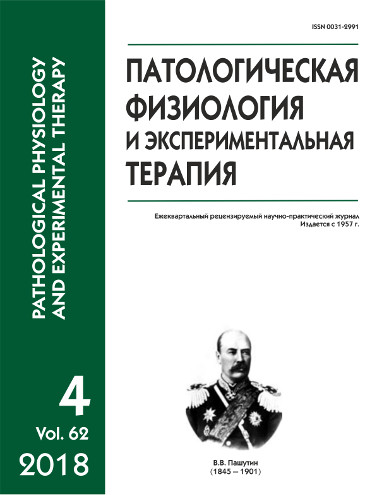Structural response of human blood serum to low intensity electromagnetic radiation
Abstract
The study of blood serum (BS) response to external electromagnetic radiation (EMR) was performed in 130 patients with different types of pathology and 30 healthy donors. Aim. To study the response of BS solid phase structure to external electromagnetic effects in patients and healthy subjects. Method. Effects of extremely high frequency (EHF) EMR, low-intensity laser radiation (LILR), and a combination of two EMR sources (LILR and EHF) on BS were studied. EMR effects were evaluated on BS solid phase structures (facies) obtained by the method of cuneiform dehydration. The method consisted of applying a drop of BS (control, experiment) on the surface of a glass test card, which was placed in a dryer for dehydration under the standard conditions (temperature, 25°C; relative humidity, 55—60%; exposure time, 18—24 h). Results. Three types of facies structure response to the effect of external radiation were observed in BS patients: normalization of the structure, strengthening of its disintegration, and lack of effect. The effect of BS facies structure normalization (harmonization) was achieved most frequently with a combination of EMR sources in a sequence of LILR + EMR. The vast majority of healthy donors were not sensitive to these types of EMR. Conclusion. We suggested that the method of BS cuneiform dehydration under the action of EMR can be used for detection of body sensitivity to various kinds of weak electromagnetic radiation. This allows to select in vitro certain types of EMR sources to ensure an optimal therapeutic effect.






